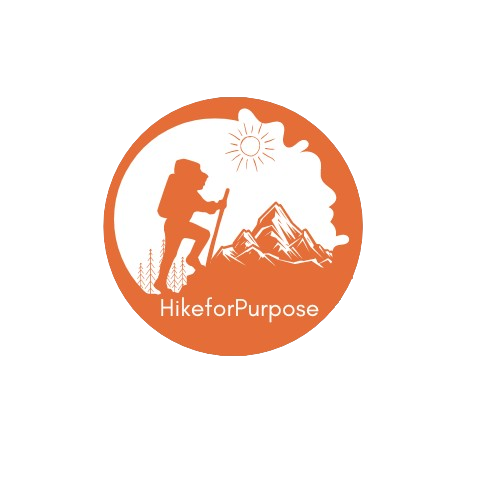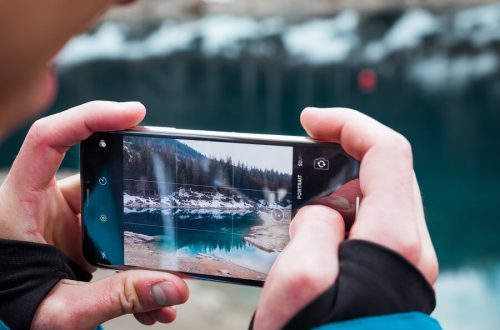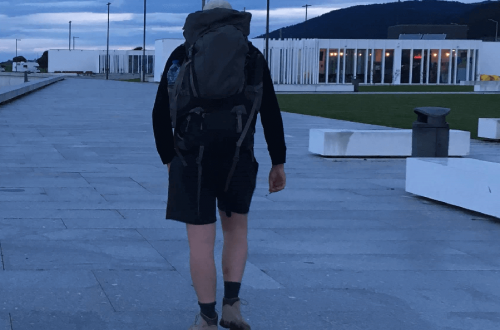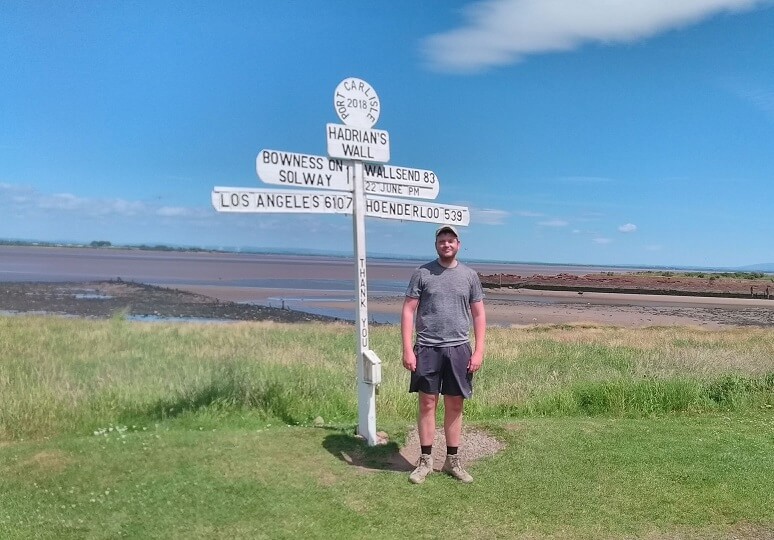
How to Hike more kilometers a day
Hiking at the end of the day is getting to point A to point B. When on a long distance thru hike you may want to get there faster or slower. Hiking more a day can make a difference. But how do you manage it?
Lets discover how you can hike more kilometers or for my American friends Miles a day. First and foremost, hiking a long distance trail is about enjoying yourself and most of the time answering a question you have.
If your question is how much can my body take then you can hike as much as you want. If you are going for another reason or really want to enjoy your time hiking. Then do not push yourself to hard.
I encountered this on the Camino in Portugal when you where afraid to maybe lose a fellow Pelgrim you where hiking with. But at the end you do it for yourself, and sometimes that stuff happens.
With that said, lets get to it!
Get up early
Surprise surprise, rise and shine!
It is not rocket science, hiking only goes so fast and most I have seen is people doing 7 to 8 kilometers an hour. Reality is that you have to figure out how much you can do in a hour and always add a bit more to it to be on the safe side. Standard is 5 kilometers an hour and with a heavy backpack or bad knees 4 or even 3.
When you get up early and get crunching on those miles you can get more done in a day. I got in a rhythm on the Camino to wake up at 6 and hike to about 1 or 2 pm. That gave me plenty of time to do 25 to 30 kilometers a day. That is my personal sweet spot. After 18 kilometers I always encounter the guy with the hammer and have to push past him. More than 30 kilometers and I am not enjoying myself anymore. I then get into the Lets just get there mindset.
But waking up early also gives you the opportunity to relax in your afternoon, or get up and hike on after lunch. In summer you can walk all day if you like right to an hour before sunset. In the winter your time is more limited.
Time management is important along the different kinds off trails and getting to know your own comfort is an important lesson you will learn. Document this a bit or make a mental note on how long it takes you to get where you need to go. Carry a watch like my Timex Expedition to have a sense of what time it is without digging out your smartphone.
Eat right and take a break right
When getting up early I am never that hungry in the first few hours, your opinion may differ. It is good to have some snacks prepared in your backpack and some lunch. When hiking I find that a good rustic sourdough bread is a godsend to have.
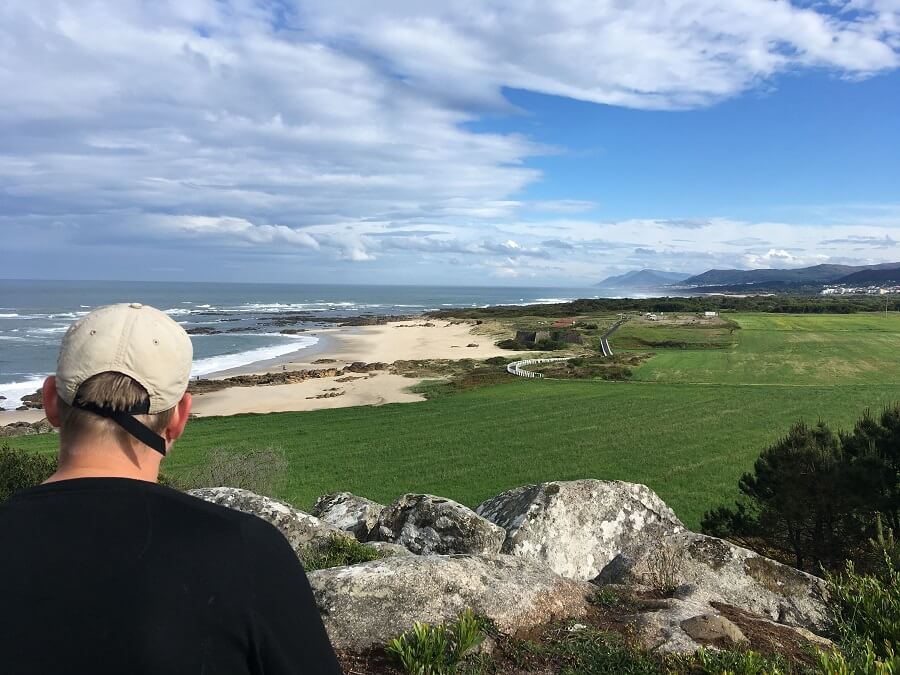
Stuff like good bread and smoked meats give you energy longer throughout the day than a Mars bar will. Plus bread can be topped with anything you like or have on hand. It has been the go to food since the Roman days and will be to long after I am gone.
Taking a break right is to not have the break last to long, when sitting on your backside for 2 hours it is a difficult thing to get up and go again. I like to take shorter breaks throughout the day and also stop for water breaks. This gives me more time in between when I really need it than 1 long big break. It also helps whenever possible to let your feet dry out.
Hiking legs
Getting your hiking legs is a well known term in the Hiking community. That is because its a real thing, the first few days or weeks depending on your overall fitness your gonna be hurting. On a longer hike you get used to the stress on your body and you will notice that after a few days it will get less and less bad. The very first day almost always sucks.
Preparing yourself in the months previous to a longer hike can help tremendously here. More on that later in the Prepare yourself with hikes section.
The impact terrain and weather have on you
Hiking in heavy rain, snow or wind can take its toll on you. The same way walking uphill or downhill can do to you. Always take in consideration how many kilometers up or down your day is and plan accordingly.
Walking uphill can really take it out of you and my advice is to just look up in the terrain and focus on the top. Do not try to stop in the middle part of a hill. Always avoid taking breaks in the middle of a harder part. Getting up and going again is hard enough as it is sometimes.
On the final bit of the Camino on to Fisterra I witnessed this with a girl that was overweight and was laying face down in on of the tougher parts of that hike in the middle part of a steep up climb. I talked to her later that night in the Hostel and she said that the rest of that hike took everything out of her and that she was going to take the bus the following day.
Don’t push yourself to hard so that you have to give up the next day. And do not stop when things get tough! The answer is in the middle. Prepare those parts of the trail that are known to be tougher that you do those in the morning. Then you can rest up in the middle part of the day.
Prepare yourself with hikes
General fitness is also a big part of how many kilometers you can hike in a day. Just starting a long distance hike at zero works for only the hardest of minds and sheer will. To make it easier on yourself prepare with smaller hikes several times a week with all your gear in tow.
And them slowly over the course of several months increase the number of kilometers to what you would like to do in a day. Don’t push yourself to hard at first and get adjusted to walking all day. This takes practice and patience. But you can do it!
Your overall mood of that day
Some days you just do not have it in you to hike 30 kilometer plus hikes, try to get yourself in a positive mindset. When hiking with more people do not start complaining all together. This causes a big hit to morale and thus the amount of kilometers covered in a day of hiking.
Play your favorite song, listen to your favorite comedians podcast or make up a game you can play. This all helps to lessen the change of giving up early.
Lighten your hiking gear
There is a reason that hiking gear is a topic of discussion everywhere you go. Everybody is looking for the most durable, lightest and best gear. Weight is super important for hiking longer distances in a day. This is reflected in training exercises and militaries all over the world and throughout history. the less you carry the more you can hike.
The general rule of thumb is that your total dry weight should be less than 10 percent of your body weight. Dry weight means without fuel for your stove, food and water. Also known as base weight of your gear. Take a good hard long look at your gear laid out on the floor and think to yourself:
- Have I used this item the last time I went hiking?
- Is there more than one use for this item?
- Can I afford to replace this item with a more lightweight option?
When hiking with a tent you have 3 main items that take up a lot of weight and room. The backpack, the Tent or sleeping shelter and your sleeping pad and sleeping bag. Downsizing or upgrading these items can make a big difference in the total amount of weight carried.
Also take a look at the smaller gear items that you think you need in your ditty bag. Most of the time you can save a surprising amount of weight with all the little things you take with you. Carrying around a full on multi-tool or an Opinel knife can make a big difference in weight for example.
Wear the right gear
This is a matter of opinion and personal preference like a lot of stuff with hiking. But wearing the right gear for the weather your in or the conditions your in can make a big difference in the amount of kilometers you can hike in a day. Lets go over the different factors that come into play while hiking.
Getting soaked
Proper rain gear is important for hiking, it is true that in a massive downpour it is extremely difficult to remain truly dry. But taking the necessary steps to avoid getting soaked is important for your mood and overal hiking. With wet feet your blisters will develop more quickly. And thus your hiking will be more difficult.
Getting cold
When hiking getting cold is not that often the case, it is when you take a break and sit down that the real cold seeps in. Always have a warm hat, gloves and a nice warm baselayer at the ready when taking breaks. That way you avoid getting chilled while sitting down. Being cold and wet all day will not spill over in the best day of hiking ever.
Getting hurt
Getting hurt can mean a lot of things, the most common way is to get blisters from the wrong socks, the wrong boots or wet feet. Try to avoid all off these things while hiking. Choosing the right socks can mean the difference between a miserable day and a beautiful day of hiking.
If your walking a trail that is well established and your not cutting through forests, maybe you do not need the category D hiking boots. But a lightweight hiking or trail shoe is more what is needed.
Conclusion, hike your own pace
Hiking your own pace is a big part of how many kilometers to hike in a day. If you are not a morning person maybe you push on till late afternoon, when you are then stop a little bit earlier and enjoy your afternoon. People and hikers are unique and everybody has their way of doing things.
There is not a step by step program to makes you cover the most miles with hiking. You will have to figure out the rhythm and go with the flow. Push on and perhaps the next time you do not want to go hiking. It is all about enjoying yourself while out in Nature. Daily life is stressful enough as it is. Maybe don’t bring the same stress with you in the outdoors.
Well I hope you have Happy hikes and Hike for a purpose!


